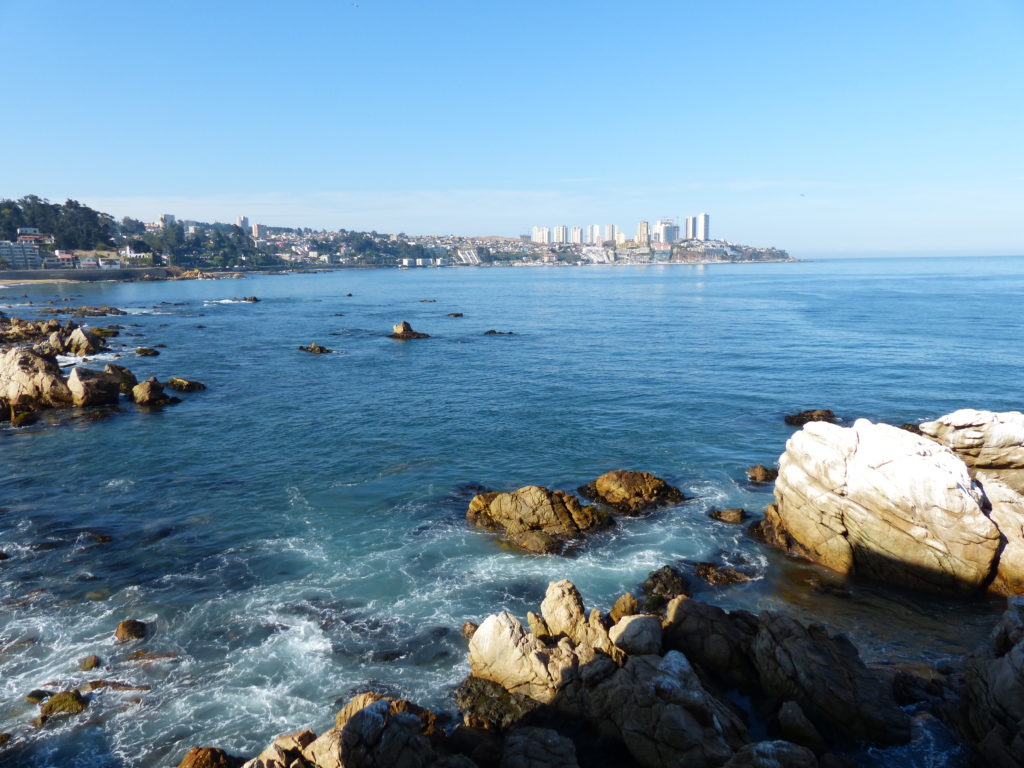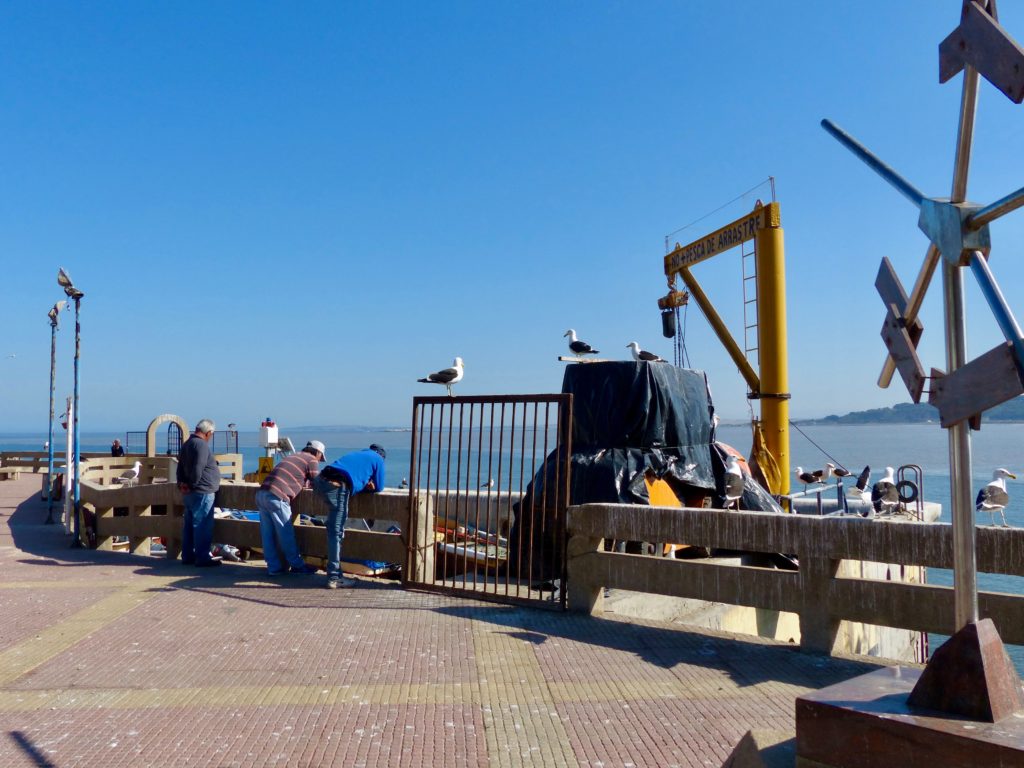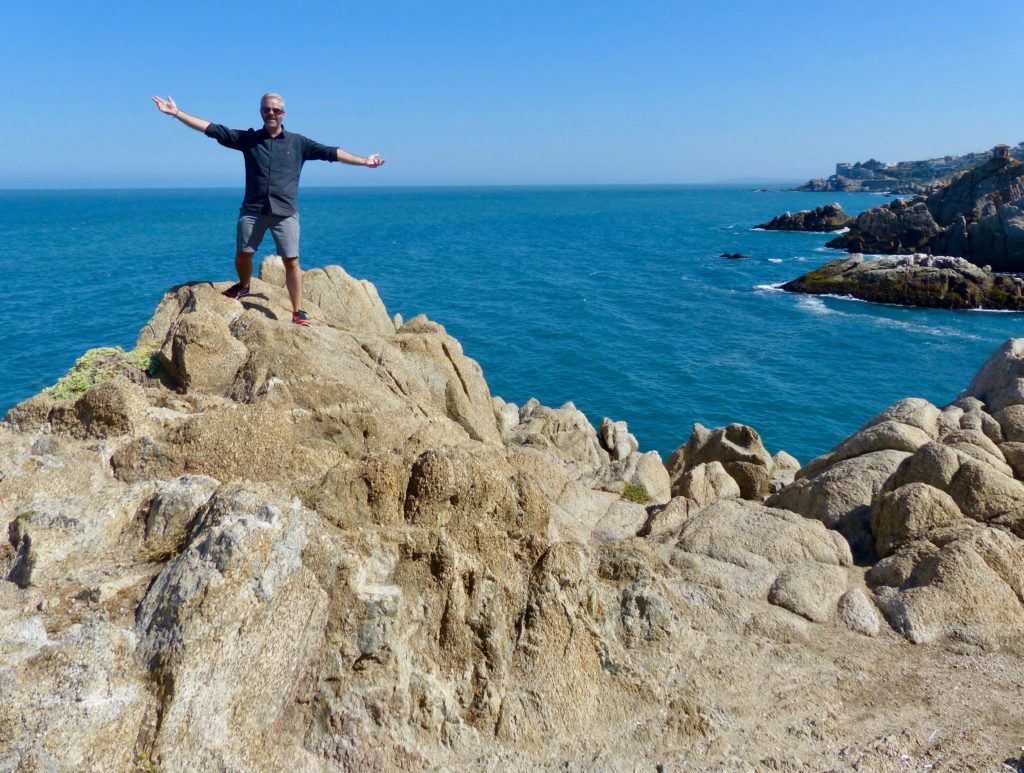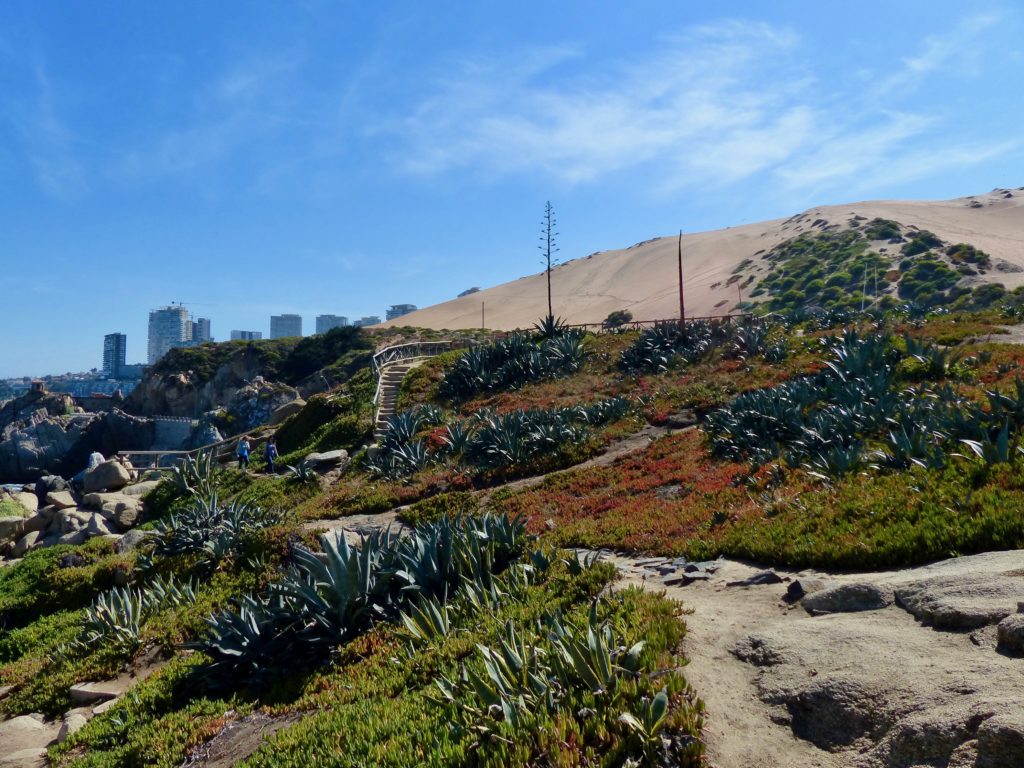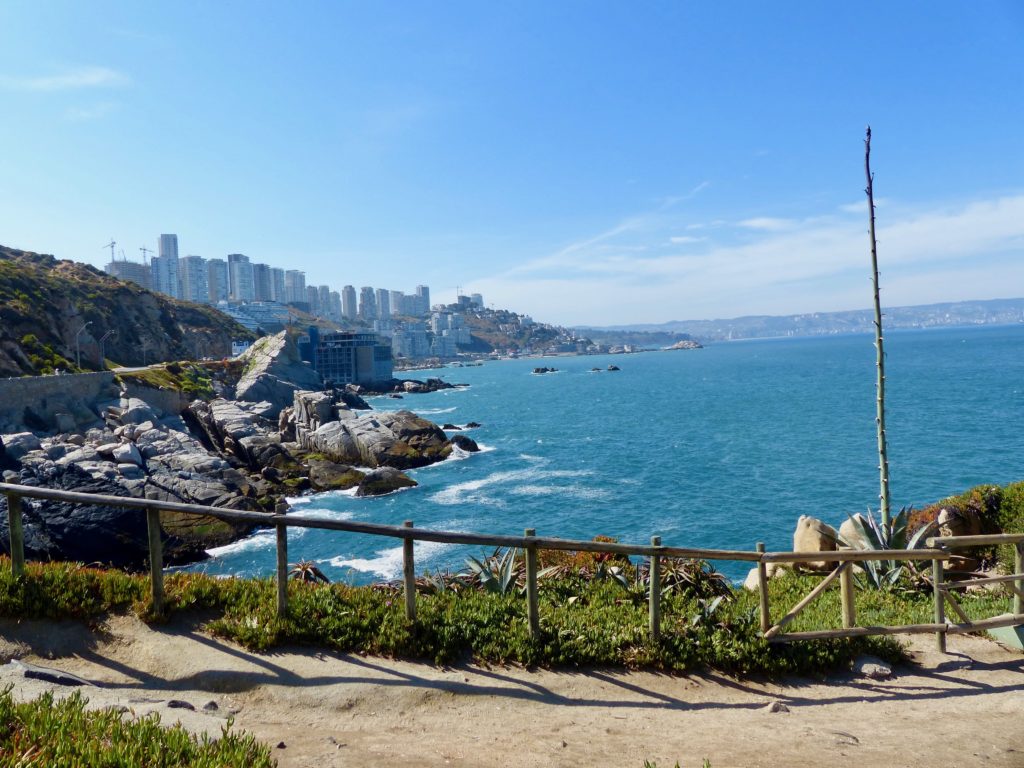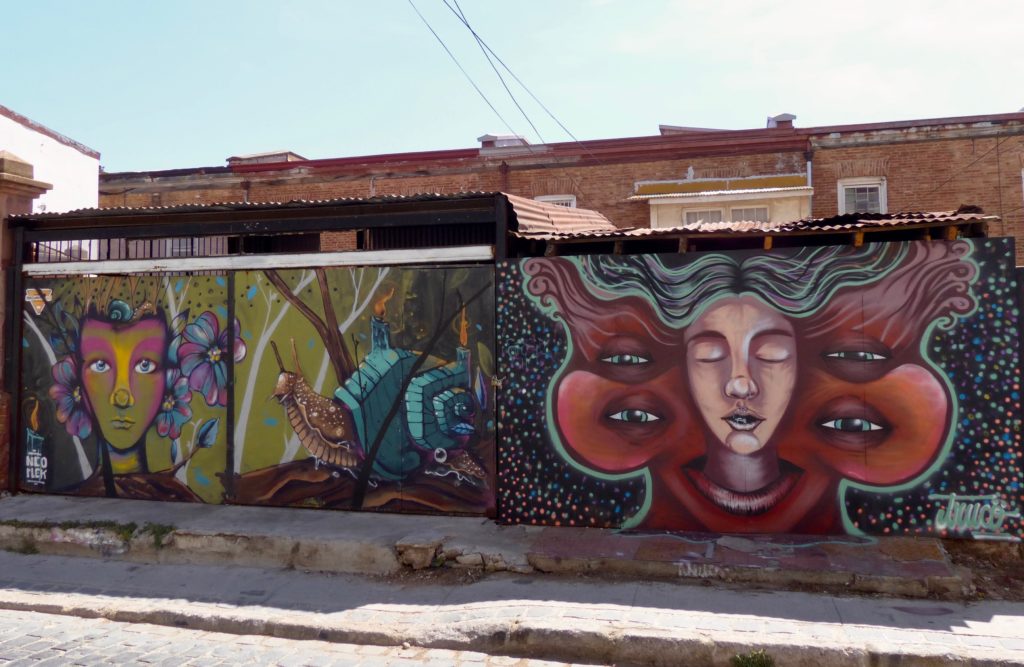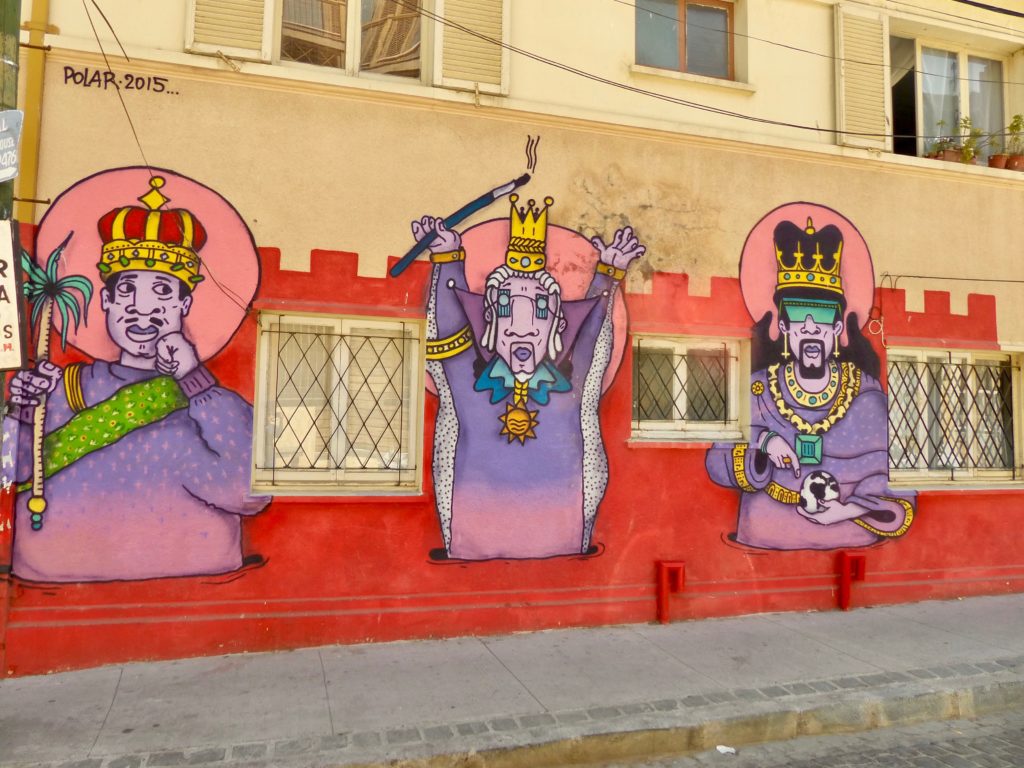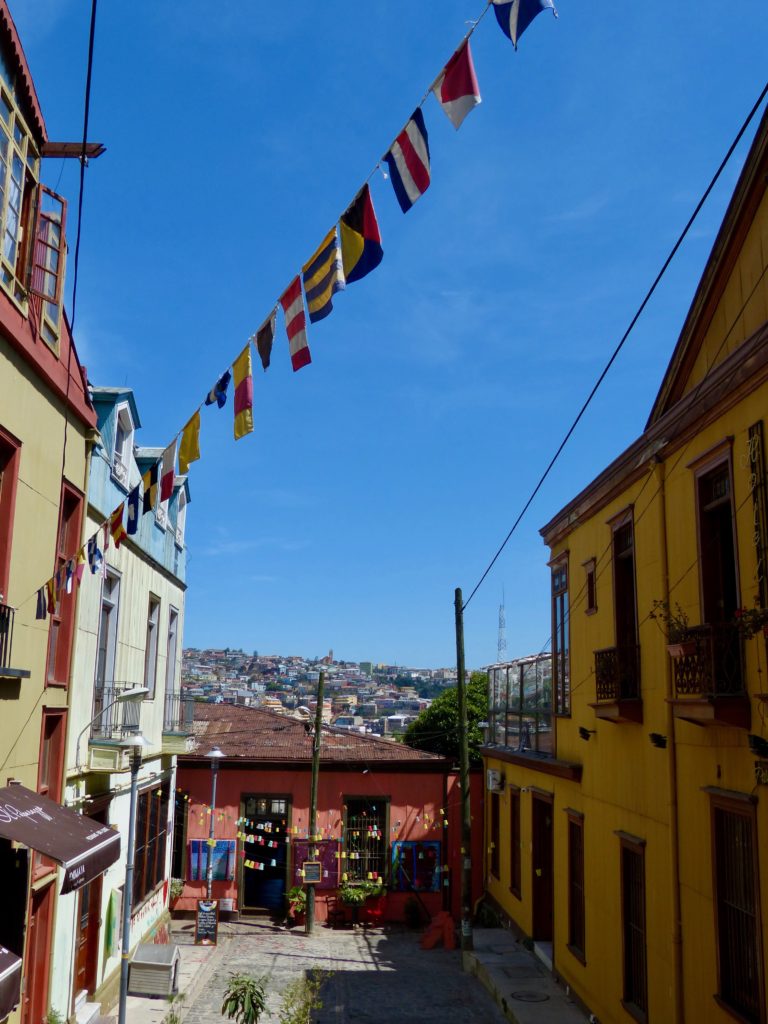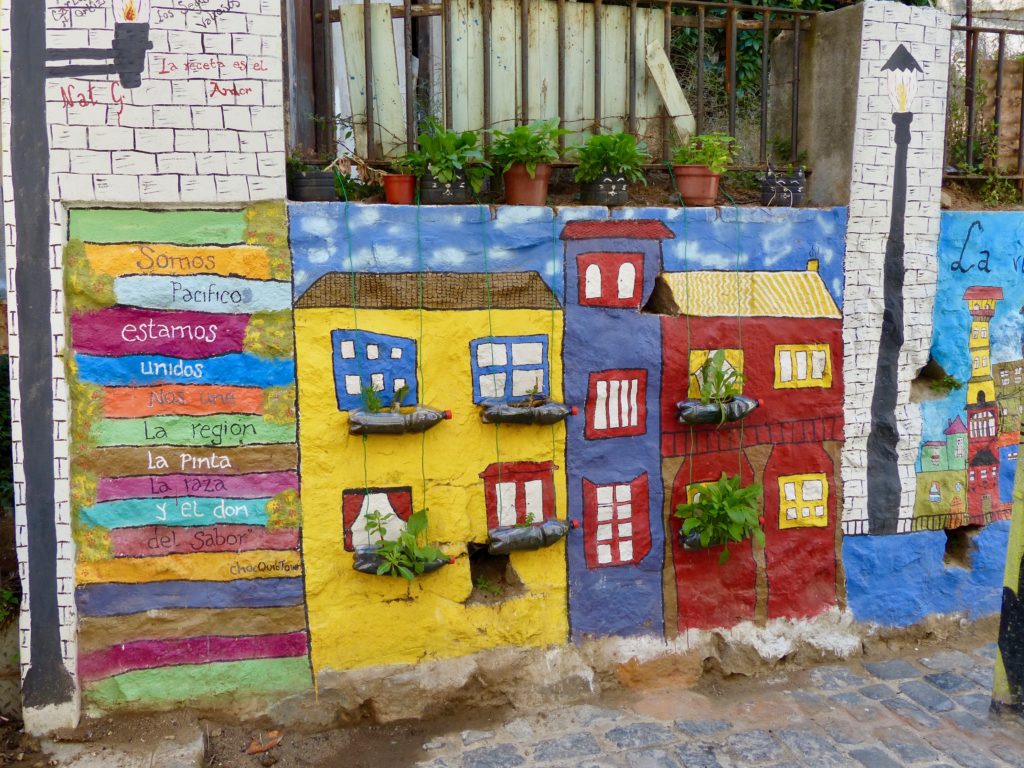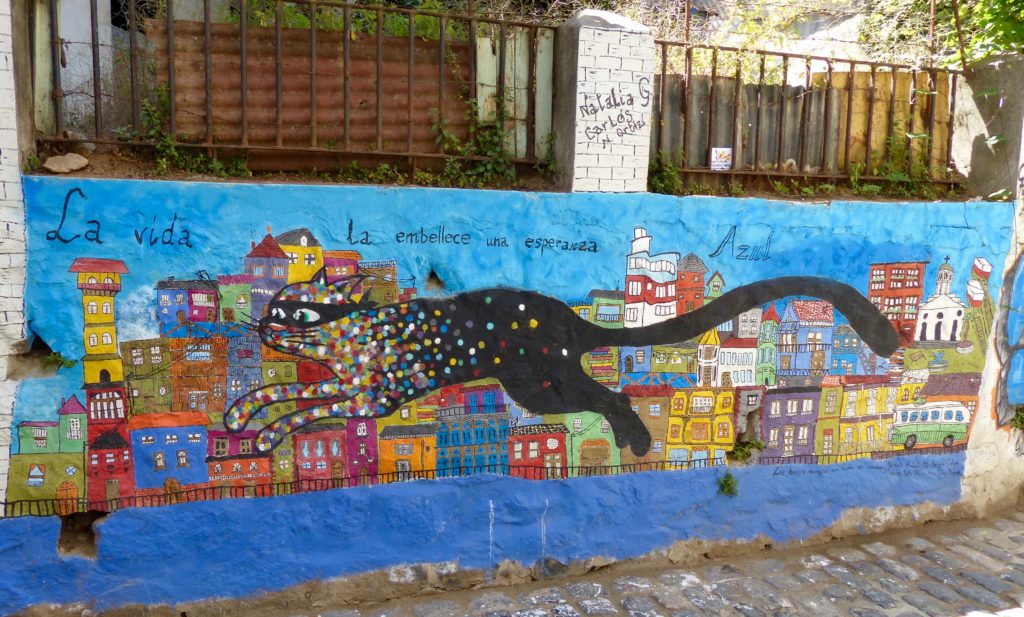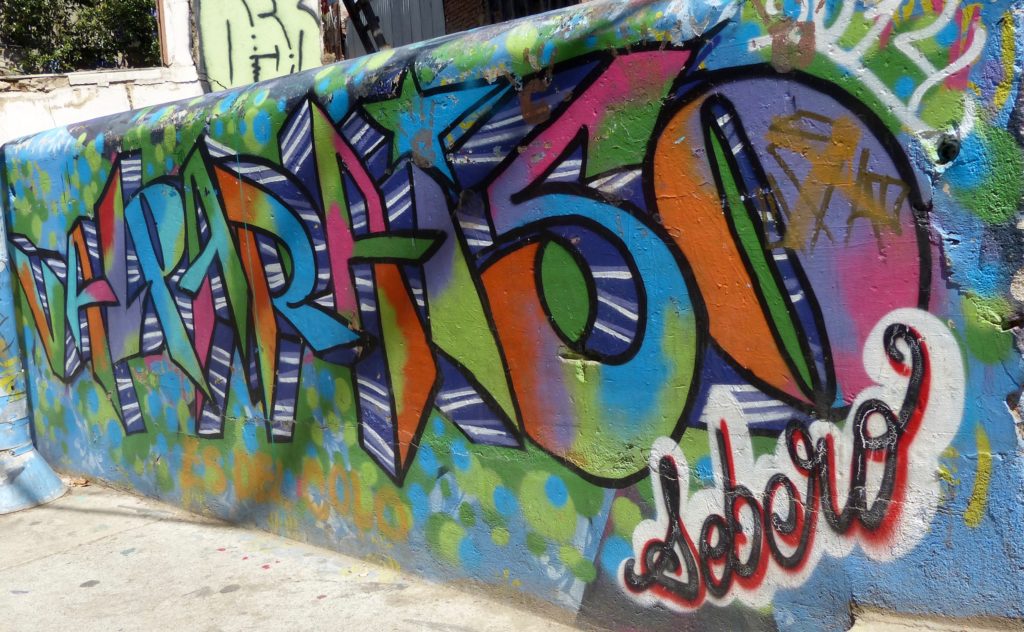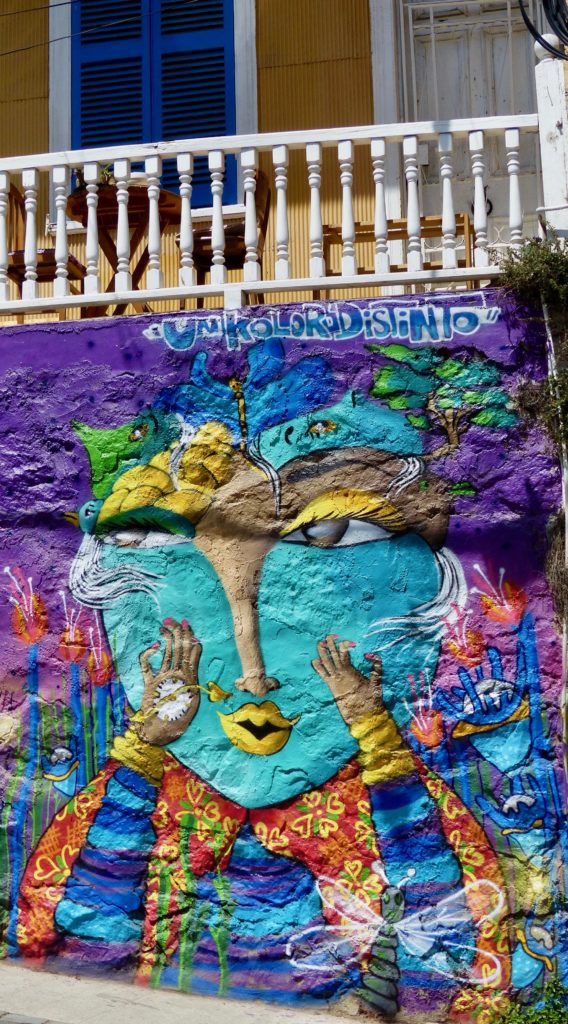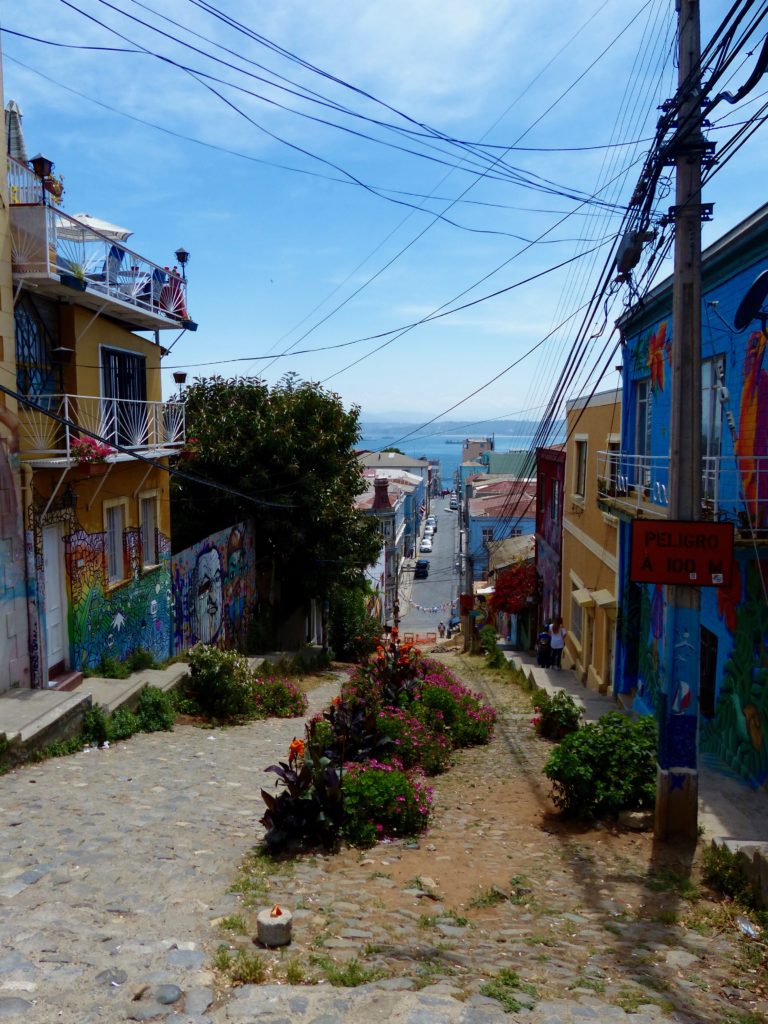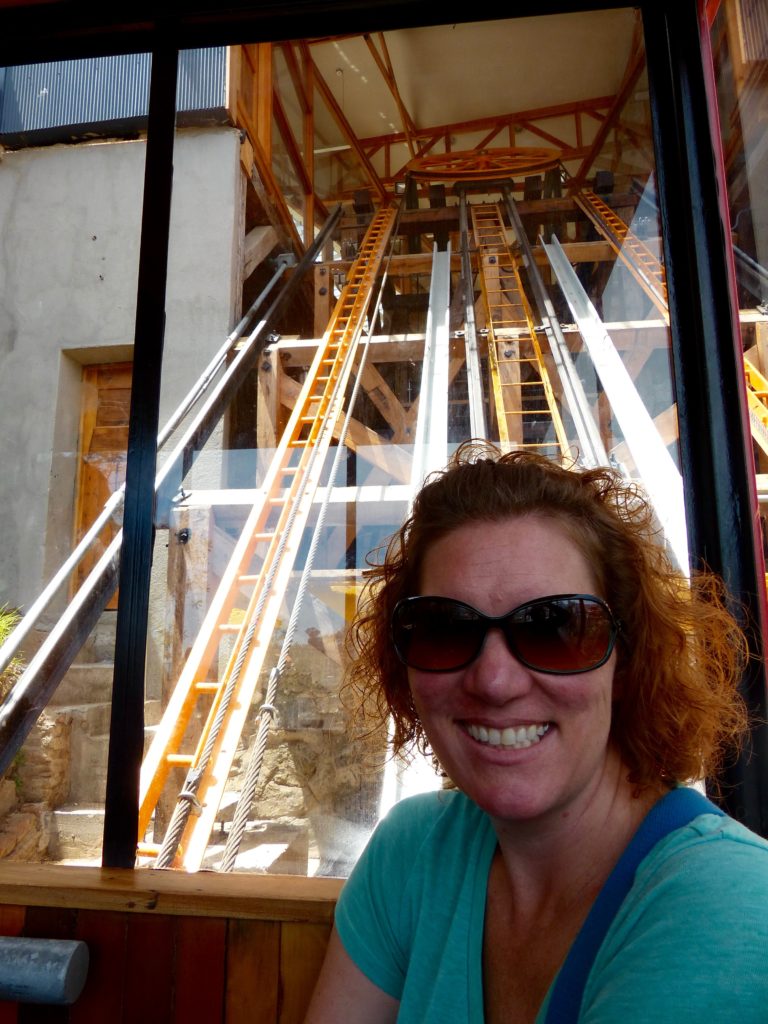Despite the fact that school was about to wrap up for a seven-week “summer vacation,” we couldn’t very well hold classes on Immaculate Conception Day, could we? So that gave us a four-day weekend in early December!
Tony’s birthday was the first day of the long weekend (see my previous post). The next day, I ditched him and took off for the beach with some friends. Craig’s cousin, Leah, was visiting from the States, so he had planned a trip to Concón. Brie and I tagged along. Tony stayed home to catsit.
Less than two hours from Santiago, Valparaiso rises up from the Pacific Ocean and undulates along the coast. Estimates vary, but most travel sites claim the city covers about 45 hills. In the mid-1800s, “Valpo” was a key seaport for international trade. A major earthquake in 1906, followed by the opening of the Panama Canal in 1914, struck a devastating blow to the city’s economy.
A UNESCO World Heritage Site, the “Historic Quarter of the Seaport City of Valparaiso” is noteworthy for three reasons, according to the UNESCO website.
The outstanding nature of the historic quarter of Valparaíso results from a combination of three factors, all associated with its role as a port: its particular geographical and topographical environment; its urban forms, layout, infrastructure and architecture; and its attraction to and influence by people from around the world. The character of Valparaíso was strongly marked by the geography of its location: the bay, the narrow coastal plains (largely artificial) and the steep hills scored by multiple ravines together created the city’s amphitheatre-like layout. Adaptation of the built environment to these difficult geographical conditions produced an innovative and creative urban ensemble that stressed the particularities of each architectural object, grounded in the technological and entrepreneurial mindset typical of the era. Consistent with its pre-eminence, the city was populated and influenced by people from around the world. The urban fabric and cultural identity of Valparaíso are thus distinguished by a diversity that sets it apart from other Latin American cities. From an urban perspective, the result of this challenging geography, modernizing impulse and intercultural dialogue is a fully original American city with the stamp of the late 19th century upon it.
Next time I visit, I will make a more conscious effort to explore more of the historic neighborhoods. This time, however, I was eager to see one of the homes of the eccentric Nobel Prize-winning poet, Pablo Neruda. Brie drove up the steep, winding road of Cerro Bellavista, and we walked in a light drizzle to La Sebastiana, Neruda’s five-story home named for the architect, Sebastián Collado. An excellent audio tour brought the house to life. As we strolled through each room, pausing to appreciate the harbor views, it was easy to imagine Neruda mixing drinks behind the bar, waxing philosophical at the dinner table, reading the newspaper in bed, and hunkering down in the leather armchair he nicknamed El Nube (The Cloud) to scratch out his powerful words in green ink.
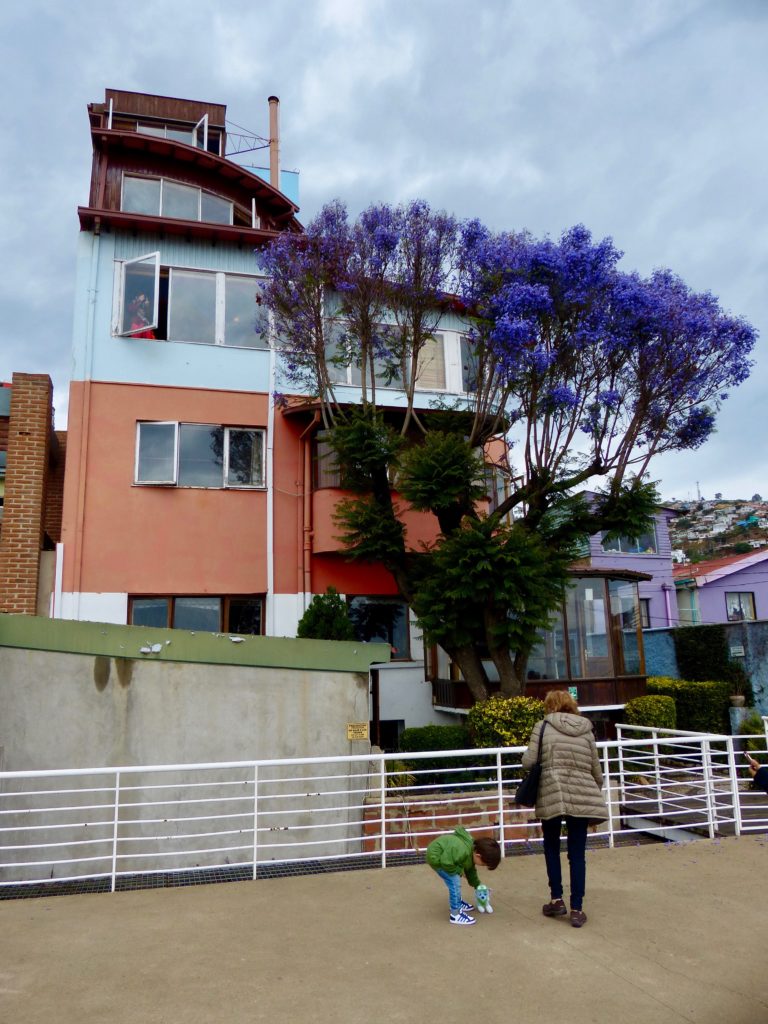
Photography in the house was permitted only to shoot out the windows.
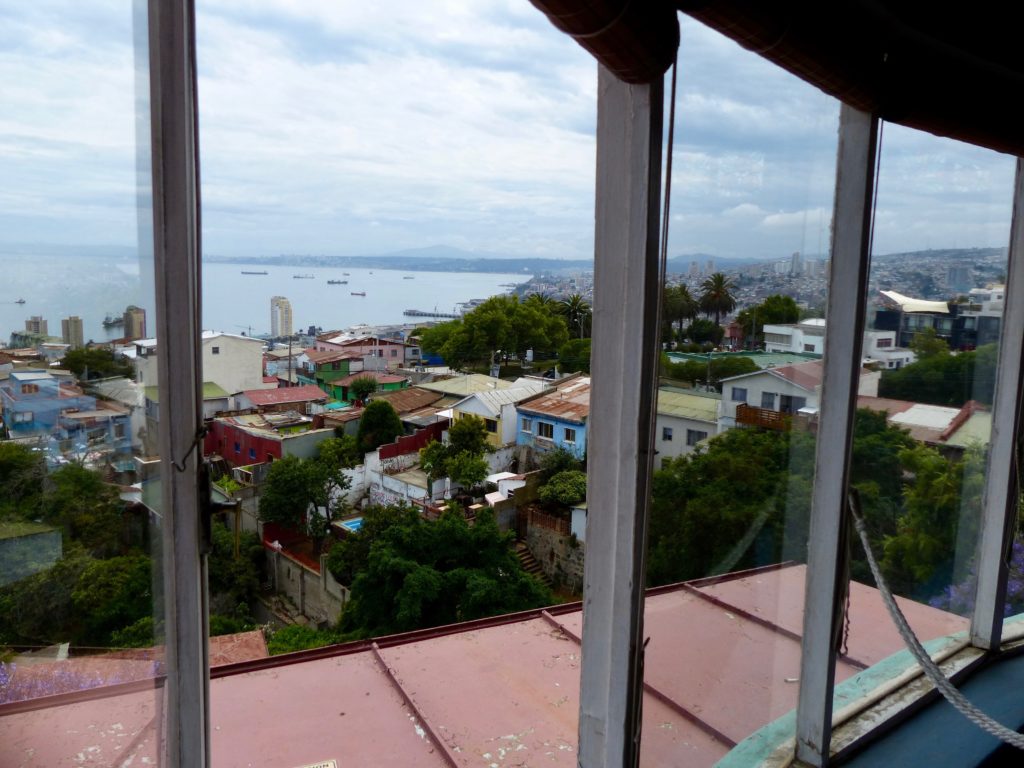
I didn’t know much about Pablo Neruda before this visit, but now I’m intrigued … possibly a bit obsessed. I just started a novel called The Neruda Case by Roberto Ampuero, and I’m reading everything I can find about Chile’s beloved poet. I saw the movie “Neruda” in Spanish (accidentally), so I look forward to watching it again when it’s released with subtitles. I worry that words have lost some of their power in today’s information-overload society, so I am particularly fascinated by a man whose art generated such an uproar around the world. I’m sure I’ll have more to say about Neruda as I get to know him better.
Cool steps near our lunch restaurant.
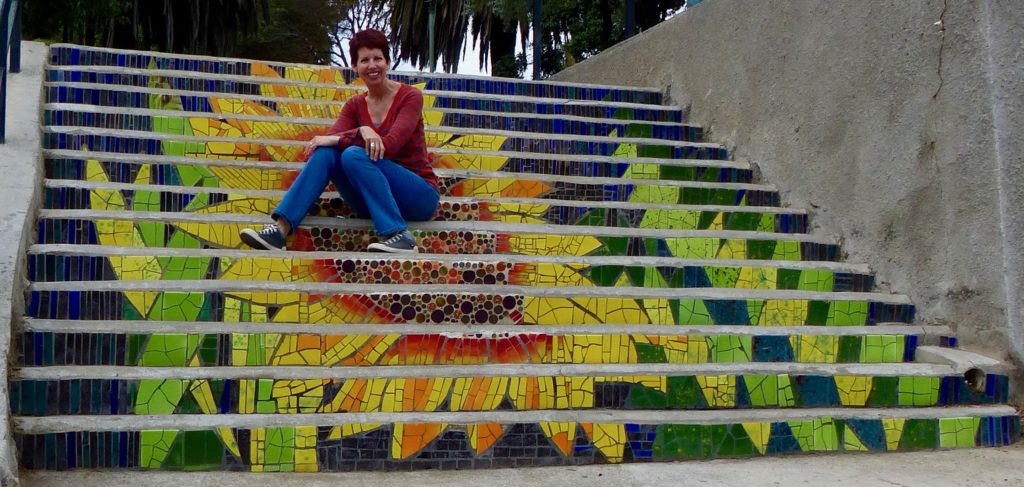
After lunch, Brie and I drove about 30 minutes to another waterside town, Concón. We checked in to the Radisson Concón, where our room included a balcony that jutted out over the water. Later, salty sea breezes and the sound of waves crashing on the boulders would lull us to sleep.
I was entranced by the huge pelicans.
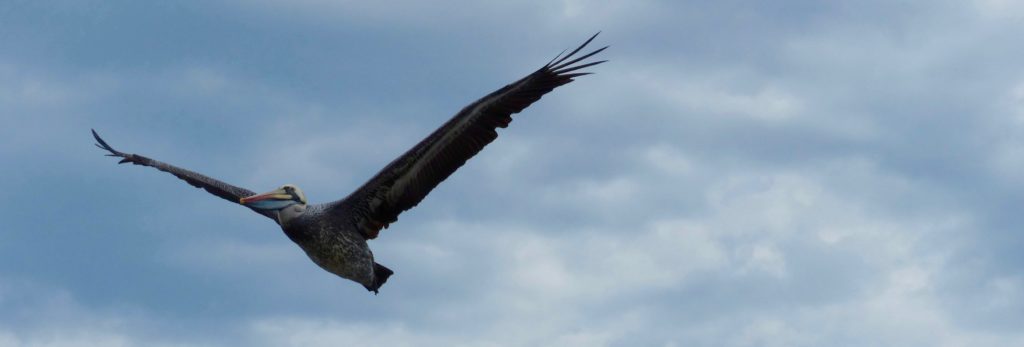
We walked along the shoreline and found a depot where fishermen were bringing in the day’s catch. Cats, seagulls, and pelicans kept close watch for any unattended treats.
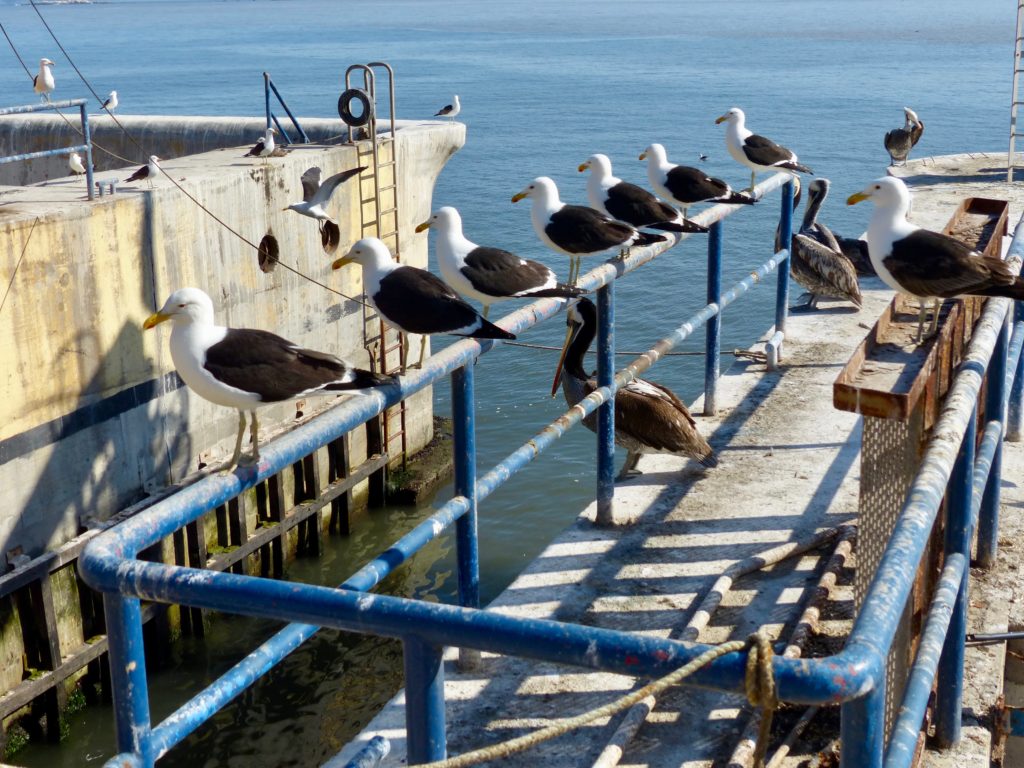
Fishermen dropped bits of fish to these pelicans. Check out that one guy’s huge open bill!
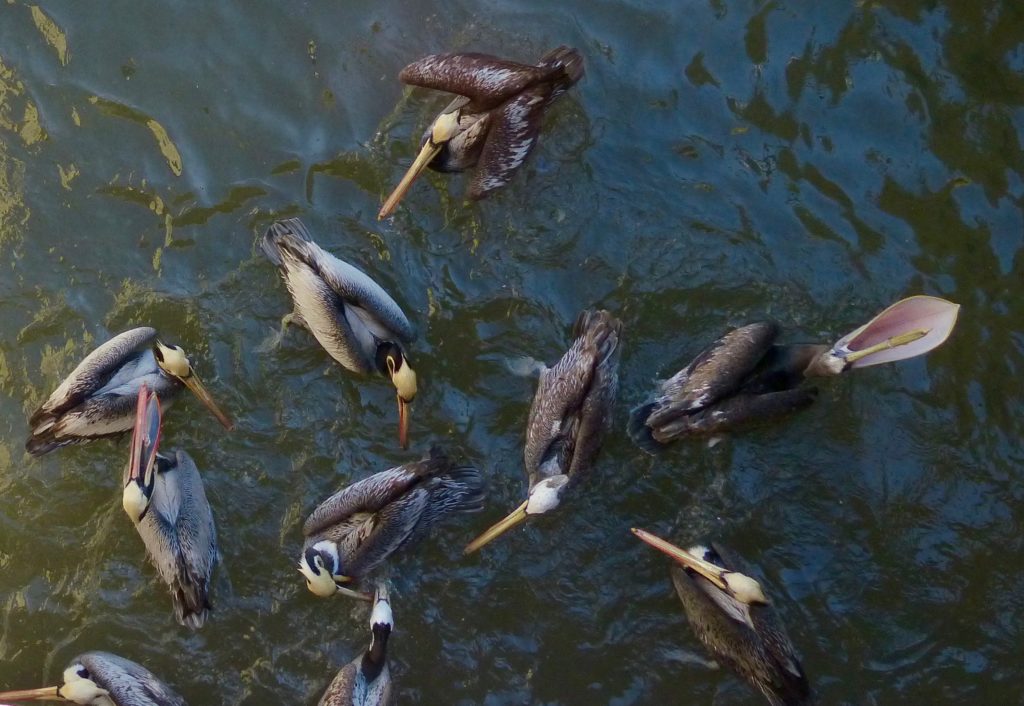
We met up with Craig and Leah for dinner at Tierra de Fuego, a beachside restaurant. I ate conger eel, a typical Chilean dish, and was surprised at how not slimy and slug-y it was. It tasted like a mild whitefish, and in typical Chilean fashion, it was pretty bland. Still, you couldn’t beat the setting of this place.
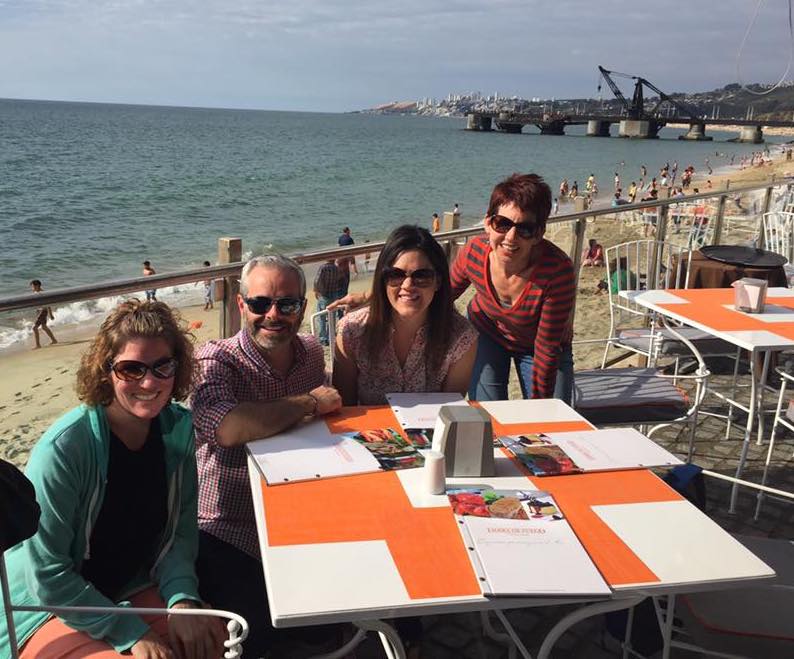
The next morning, Craig drove us all back to Valparaiso – with a quick stop to clamber around the rocks at a Concón observation area.
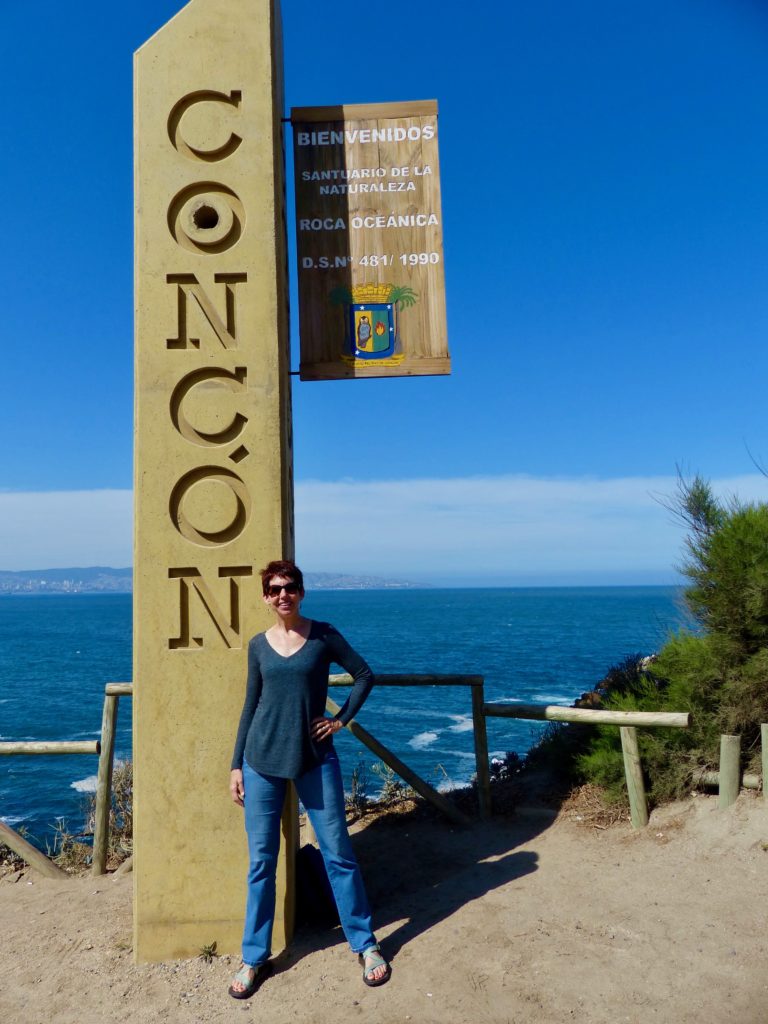
In Valpo, Craig led us on a route he had learned from a friend, up and over a few hills. Famous for colorful homes, brilliant murals, and ubiquitous graffiti, Valpo’s hills are best explored on foot.
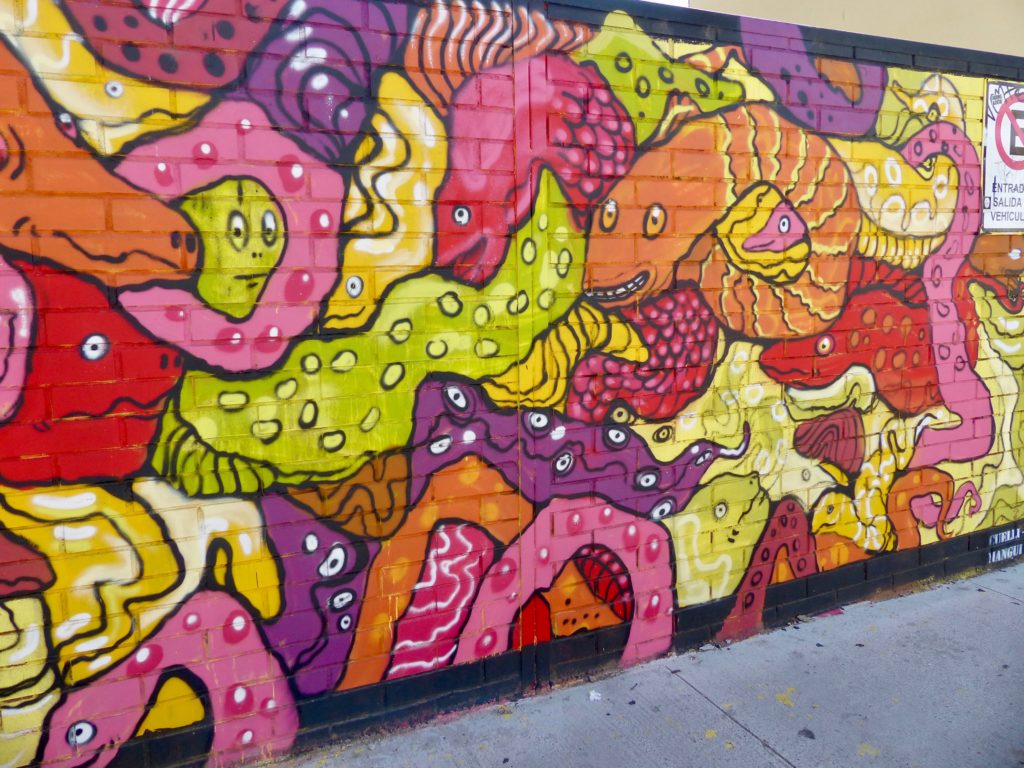
At one time, 26 funicular railways transported residents up and down the hillsides. Only a handful operate today. After traipsing around for awhile, we boarded the Ascensor El Peral funicular – built in 1902 – for the 52-meter descent at a 48-degree gradient.
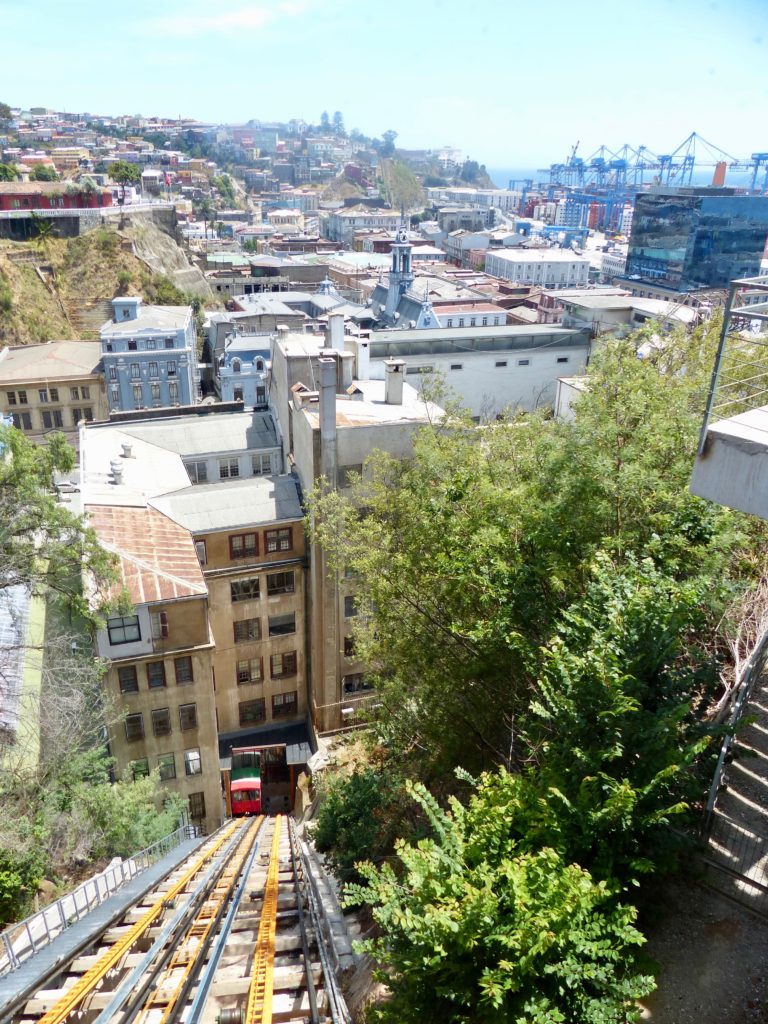
That evening, we hung out at the hotel’s waterfront bar for a stunning sunset.
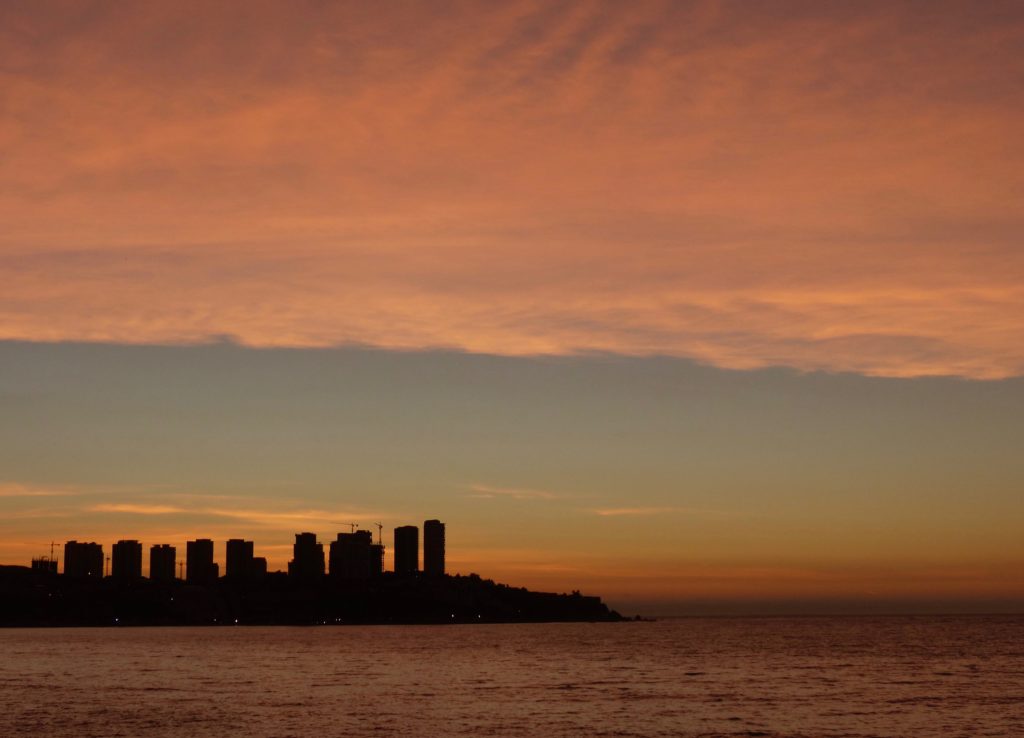
As a tag-along on this trip, I had done no research and was unfortunately uninformed about where we were going or what we were seeing. I have a feeling this is a place I’ll re-visit many times while living in Chile and I look forward to bringing visitors here, so I vow to be better prepared in the future!

